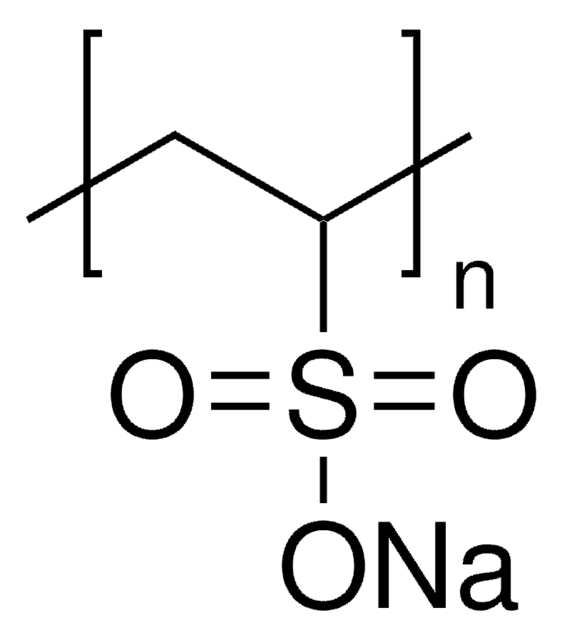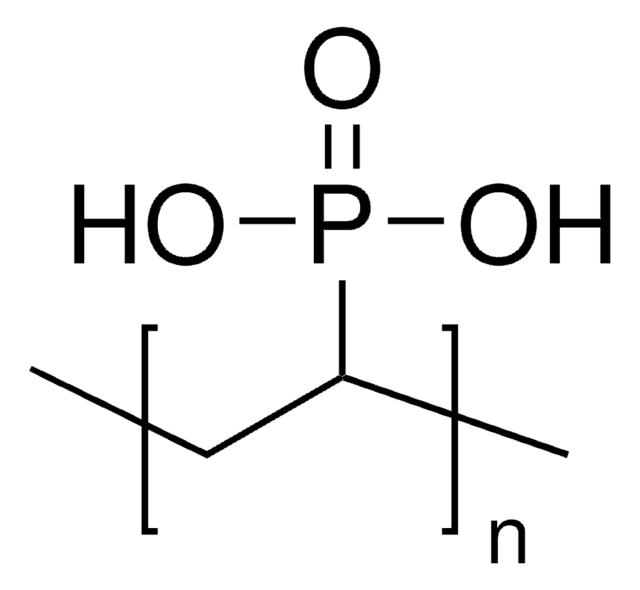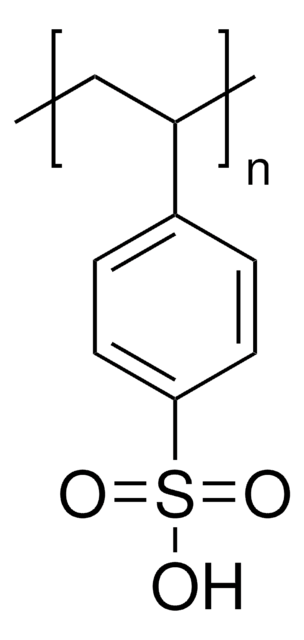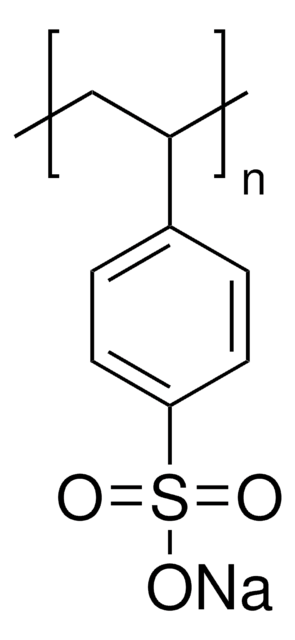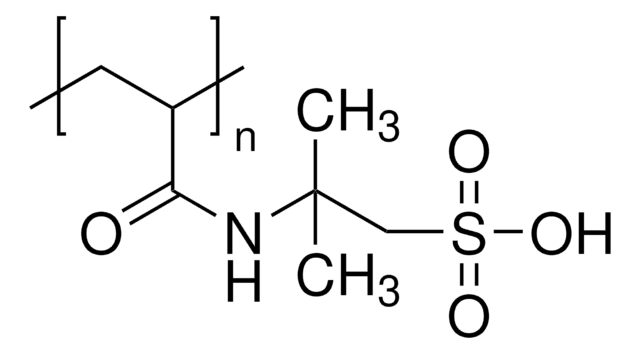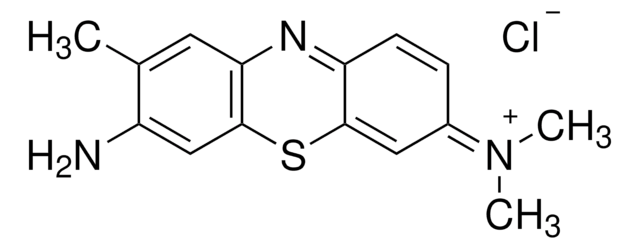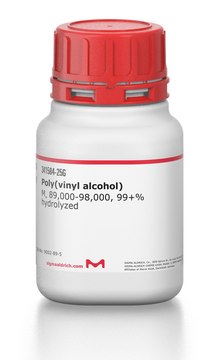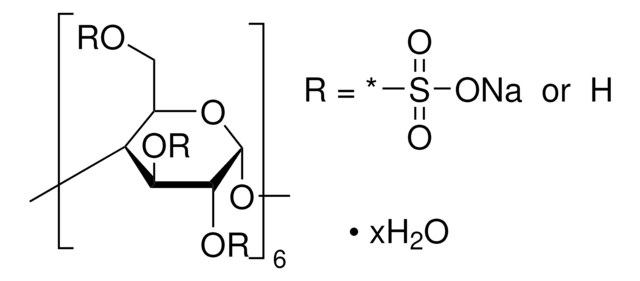推荐产品
储存分类代码
13 - Non Combustible Solids
WGK
WGK 3
闪点(°F)
Not applicable
闪点(°C)
Not applicable
历史批次信息供参考:
分析证书(COA)
Lot/Batch Number
Erik Sedlák et al.
Biomacromolecules, 10(9), 2533-2538 (2009-08-04)
Stability of four dissimilar basic proteins (chymotrypsinogen A, ribonuclease A, cytochrome c, lysozyme) in the complex with four polyanions (heparin, poly(vinylsulfate), poly(4-styrene-sulfonate), Nafion) has been studied by differential scanning calorimetry. The polyanions were chosen because of their different charge density
Takashi Masadome et al.
Analytical sciences : the international journal of the Japan Society for Analytical Chemistry, 24(3), 415-418 (2008-03-12)
A potentiometric titration method using a cationic surfactant as an indicator cation and a plasticized poly(vinyl chloride) membrane electrode sensitive to the cationic surfactant is proposed for the determination of polyhexamethylene biguanide hydrochloride (PHMB-HCl), which is a cationic polyelectrolyte. A
Toshiaki Hattori et al.
Analytical biochemistry, 342(2), 229-236 (2005-06-14)
The binding constant (K(obs)) for the beta-lactoglobulin-poly(vinylsulfate) (BLG-PVS) complex was measured by frontal analysis continuous capillary electrophoresis at pH values above the isoelectric point of BLG, and the persistence length (L(p)) of PVS was measured by small angle neutron scattering
E Sedlák et al.
Biopolymers, 46(3), 145-154 (1998-08-12)
The properties of the complexes of ferricytochrome c with two different polyanions--poly(vinylsulfate) and poly(4-styrene-sulfonate)--with a comparable charge density but with the different size of the uncharged part of their molecules have been studied by means of optical spectroscopy, differential scanning
Diana Fedunová et al.
Biotechnology and bioengineering, 93(3), 485-493 (2005-11-08)
Differential scanning calorimetry, viscometry, optical and CD spectroscopy were used to characterize the influence of two polyanions, poly(vinylsulfate) (PVS), and poly(4-styrene-sulfonate) (PSS) on thermal transition reversibility of ferricytochrome c at or near isoelectric pH. In these conditions, both PVS and
商品
Recently, layer-by-layer (LbL) assembly has emerged as a versatile, gentle and, simple method for immobilization of functional molecules in an easily controllable thin film morphology.1,2 In this short review, we introduce recent advances in functional systems fabricated by using the mild, yet adaptable LbL technique.
We present an article that discusses two applications in particular; first, using these layers as polyelectrolyte membranes to control permeability.
我们的科学家团队拥有各种研究领域经验,包括生命科学、材料科学、化学合成、色谱、分析及许多其他领域.
联系技术服务部门